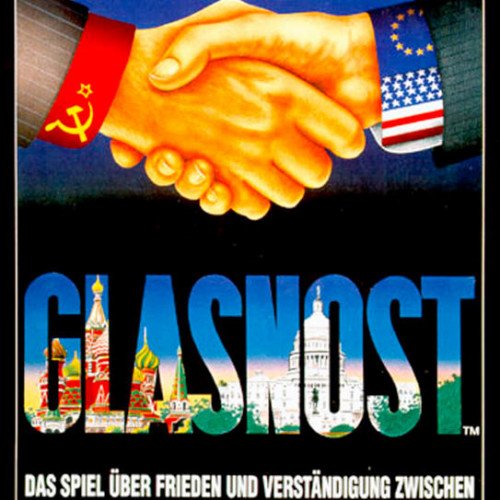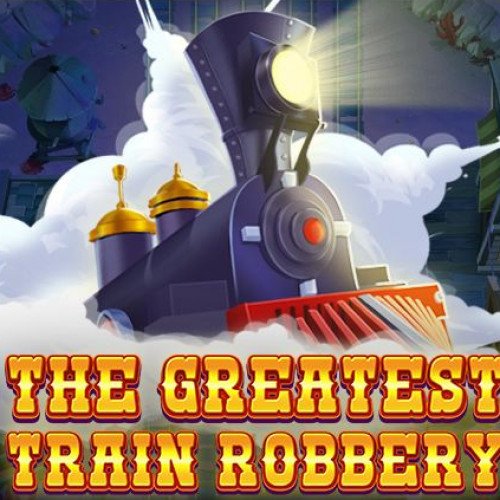"GLASNOST THE GAME" vs "THE GREAT TRAIN ROBBERY"

GLASNOST THE GAME
Glasnost The Game is a strategic board game, produced by the Cypriot company YL Games. It was invented in 1989 by neuroscientist Yiannis Laouris, with help and inspiration from his daughter Romina, and his friend George Vakanas in Tucson, Arizona. Glasnost The Game is a turn-based game for ideally four players. It is played on a board depicting a partly modified political map of the Earth, divided into territories, which are grouped into seven continents. The continents are surrounded by a path along which the token-ships of the players move. The Players move their tokens with the classical throw of dice. Players attempt to colonize bordering territories from other players. Once a player owns a territory, they may construct industries. In every round, their industries produce weapons for new armies, which eventually facilitate a player’s ability to make war and conquer new territories (again with the throw of dice). At any time, a player may unilaterally disarm any country that belongs to them. The winner is the player who has the most points when the whole world is disarmed. The game is played on a board depicting a partly modified political map of the Earth, divided into 166 territories, which are grouped into five continents. Players begin with ownership of 25 industries and 25 armies. Industries represent economic power. Armies are used to colonize/capture adjacent countries or to apply political pressure in order to achieve disarming. Players attempt to colonize territories from other players. Once a player owns a territory, they may build industries inside that territory. In every round, industries produce armies, which eventually assist a player’s capacity to make wars and colonize territories. The ultimate goal of the game is to disarm the Earth. During the process of disarming, players earn credits. At any time, a player may unilaterally disarm any country that belongs to them. When the whole Earth becomes demilitarized, the winner of the game is the player who earned the most points. Demilitarization is the only way to earn points. In the process of the game, it is necessary to negotiate disarming, colonize new countries and make wars with opponents. The game develops players’ abilities to conceptualize, evaluate and implement strategies of cooperation and aggression.
Statistics for this Xoptio

THE GREAT TRAIN ROBBERY
The Great Train Robbery is a board game created by the British military historian and author Bruce Barrymore Halpenny in the early 1970s, and is based upon the actual Great Train Robbery that took place on the 8 August 1963. Although based on the Great Train Robbery, the board game has been adapted on a few small points, one being the extra farm house that was added for playing purposes. The game is a form of strategy race game, with the robber player trying to avoid the police players. The game itself took three days and three nights for Bruce Halpenny to design, and then three years to bring onto the market. The famous train artist David Weston was commissioned by Bruce Halpenny to paint the box. The board of the game was original, which made a change from most board games that tend to be adaptations of other games The board is made up of a quite complex and extensive road network, down which the robbers escape from the train, and through which the police chase the robbers or set road block traps.Its rules are easy to interpret, but the players have to use a fair amount of judgement and skill in order to trap or avoid trapping each other. The game, as well as having a good response in Britain in a year when the indoor games market had taken a knock, was equally popular in West Germany, where a television series called Die Gentlemen bitten zur Kasse , based on the 1963 robbery, had been a tremendous success. It was also used as a prize on British TV shows such as Tiswas and Crackerjack. In an interview, Bruce Halpenny said, “With crime you deal with every basic human emotion and also have enough elements to combine action with melodrama. The player’s imagination is fired as they plan to rob the train. Because of the gamble they take in the early stage of the game there is a build up of tension, which is immediately released once the train is robbed. Release of tension is therapeutic and useful in our society, because most jobs are boring and repetitive.”